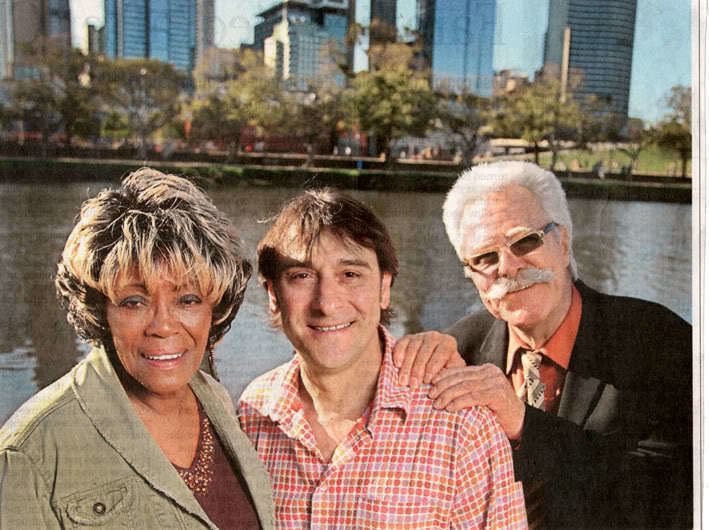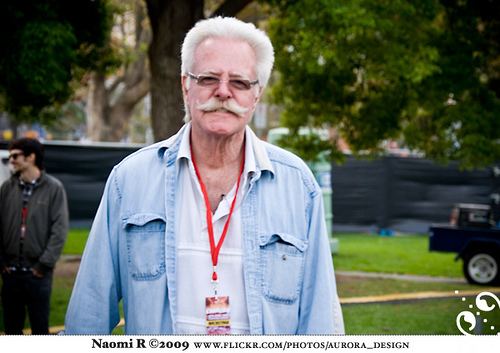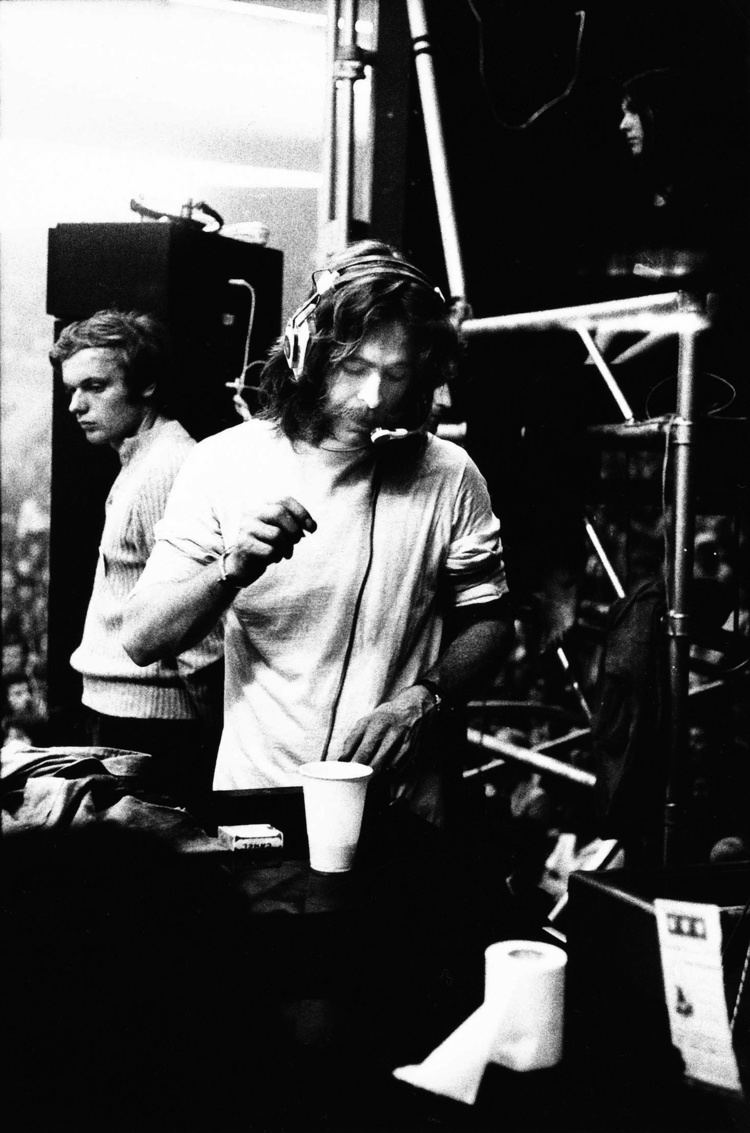Nationality American Name Chip Monck Other names Chip Monk, Chipmonck Known for Woodstock | Years active 1959 - current Website www.chipmonck.com | |
 | ||
Full Name Edward Herbert Beresford Monck Occupation Lighting Designer, Staging Designer Awards 2004 Parnelli Lifetime Achievement Award, 1975 Tony nomination for Lighting Design Similar People Bert Sommer, Michael Lang, Wavy Gravy | ||
Ovation channel woodstock chip monck interview part 1
Edward Herbert Beresford "Chip" Monck (born March 5, 1939 in Wellesley, Massachusetts) is an American Tony Award nominated lighting designer, most famously serving as the master of ceremonies at the 1969 Woodstock Festival.
Contents
- Ovation channel woodstock chip monck interview part 1
- Personal history
- Early career
- Woodstock
- The Rolling Stones
- Later career
- References

Personal history

Monck was born in Wellesley, Massachusetts to a mother from Nutley, New Jersey and a father from Liverpool, England, he acquired the nickname "Chip" at a summer camp in Winnipesaukee, New Hampshire. While Monck went to the South Kent School on Ice Hockey and Crew scholarships, he became more interested in welding and machinery, designing a potato harvester that he sold to McCormick. He began volunteering with a summer theater group at Wellesley College, learning the basics of theatrical lighting from Greg Harney. He began auditing classes at Harvard while working with the university's theater company.
Early career

Monck began working at the Greenwich Village nightclub The Village Gate in 1959, lighting comedians and Jazz and Folk artists, and living in the basement apartment under the club (Bob Dylan wrote "A Hard Rain's A-Gonna Fall" on Monck's IBM Selectric typewriter). He began an eight-year-long relationship with the Newport Folk Festival, and a nine-year one with the Newport Jazz Festival, while continuing to work at the Gate. He became friends with Charles Altman of the Altman Lighting Co., repairing equipment and borrowing lighting instruments to improve the stage lighting of the Gate. He began lighting the stage of the Apollo Theater in Harlem.

In 1967, he lit the Monterey Pop Festival, which featured the first major American appearances by Jimi Hendrix and The Who, as well as the first major public performances of Janis Joplin. Monck's work can be seen in the D. A. Pennebaker film Monterey Pop. That year, he also did The Byrds at the Hollywood Bowl and his first Rolling Stones concert. The following year, he worked with Crosby, Stills and Nash in Europe, and began working with concert impresario Bill Graham, renovating the Fillmore theaters.
Woodstock
In 1969 he did the concert that would define his career and make him a public figure.
Monck was hired to plan and build the staging and lighting, ten weeks of work for which he was paid $7,000. Much of his plan had to be scrapped when the promoters were not allowed to use original location in Wallkill, New York. The stage roof that was constructed in the shorter time available was not able to support the lighting that had been rented, which wound up sitting unused underneath the stage. The only light on the stage was from spotlights.
He was drafted just before the concert started as the master of ceremonies when Michael Lang noticed that they had forgotten to hire one. He can be heard (and seen) in recordings of Woodstock making the stage announcements, including requests to "stay off the towers" and the warning about the "brown acid".
The Rolling Stones
Four months after Woodstock, Monck and Lang planned the Altamont Free Concert for the Rolling Stones, which also had to move from the original planned location, but this time with unfortunate results. Members of the Hells Angels motorcycle club were hired to provide security for the concert with terrible results. Monck confronted a member of the Angels stealing a large custom carpet that was part of the Rolling Stones stage set and lost teeth being hit in the mouth with a pool cue. He later tracked down the person and managed to trade the carpet for a case of brandy.
Monck invented an innovative method of stage lighting for the 1972 tour. Instead of raising 3,000 pounds of lamps to the trusses, Monck installed a 40' x 8' array of Mylar mirrors. A row of spotlights sitting on the floor behind the stage bounced light off the mirrors onto the stage.
Later career
In 1974, Monck was the host of Speakeasy, a short-lived rock and roll talk show that featured mostly chat and some live performances by such acts as Tom Waits, Frank Zappa and Emerson, Lake and Palmer. Monck's persona was well-known enough to be parodied as "Chick Monk" on SCTV by Tony Rosato as a marriage councilor employing strobe lights and a fog machine.
Also in 1974, he provided production services for the Muhammad Ali/George Foreman boxing match The Rumble in the Jungle, and the associated three-day music festival Zaire 74, which featured performances by James Brown, Celia Cruz and the Fania All-Stars, B.B. King, Miriam Makeba, The Spinners, Bill Withers, and Manu Dibango. Monck's work can be seen in the films Soul Power and When We Were Kings.
He was the lighting designer for the Opening and Closing Ceremonies of the 1984 Summer Olympics in Los Angeles, as well as consulting on the 2000 Summer Olympics in Sydney.
As of 2011, Monck resides in the Melbourne suburb of Fitzroy, Australia concentrating on corporate and retail lighting.
In 2011, he served as the Director of Production of the One Great Night On Earth Festival, planned for December 1, 2012. This event was intended to raise funds to help Australians in regions devastated by natural disasters like the Black Saturday bushfires, flooding and drought.
